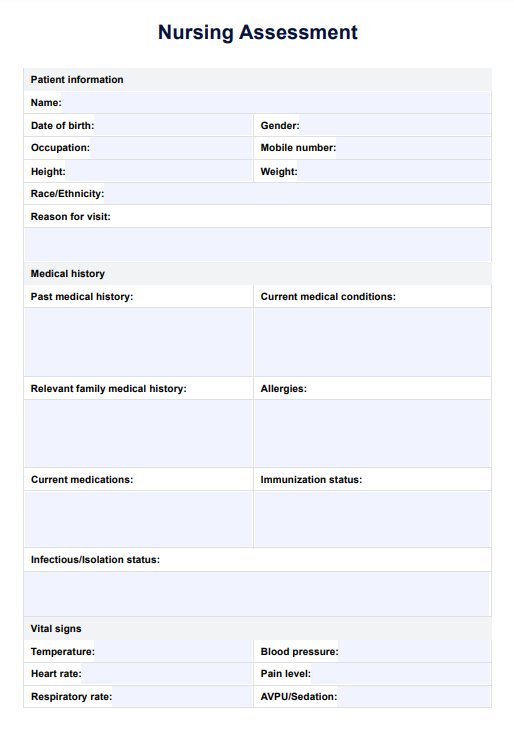The frequency of Nursing Assessment varies based on the patient's condition, healthcare setting, and facility protocols. Generally, assessments are conducted upon admission, during shifts, with changes in patient status, and before significant interventions or procedures.

Nursing Assessment
Comprehensive nursing assessments: gather patient data, assess vital signs, perform physical examinations, and develop individualized care plans.
Nursing Assessment Template
Commonly asked questions
Yes, Nursing Assessments are performed in a variety of healthcare settings, including hospitals, clinics, long-term care facilities, home healthcare, and community health centers.
Documentation in Nursing Assessments is vital for accurate record-keeping, communication among healthcare providers, legal documentation, and maintaining a comprehensive and up-to-date patient health record. Proper documentation also aids in objective data collection.
EHR and practice management software
Get started for free
*No credit card required
Free
$0/usd
Unlimited clients
Telehealth
1GB of storage
Client portal text
Automated billing and online payments











